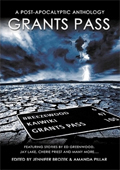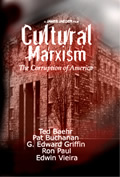NATIONAL
HERITAGE AREAS: THE LAND GRAB CONTINUE
PART 3 of 3
by
Tom DeWeese
October 23, 2012
NewsWithViews.com
Congressmen in opposition to National Heritage Areas
The late Representative Gerald Solomon from New York wrote a letter September 19, 1994, to his colleagues regarding a National Heritage Area program for the Park Service. His letter said: “I urge you to defend property rights and strongly oppose the American Heritage Area Participation Program. The environmentalists advocating this bill have federal land use control as their primary objective. The bill wastes tax dollars that could be more appropriately spent on maintaining our national parks. Property rights defenders have legitimate concerns about the provision in the bill requiring localities to obtain approval by the Secretary of Interior for land use plans. Why spend $35 million on non-federal heritage areas when our national parks desperately need funds for maintenance and repair? Again, I ask you to defend property rights and oppose this bill.”
Little has changed in the eighteen years since Congressman Solomon warned his colleagues about the imprudence and danger of National Heritage Areas. The advocates of this program still have federal land use control as their primary objective. Heritage Areas still waste tax dollars that would be better spent on a Park Service maintenance backlog that now numbers in the billions of dollars. And the Secretary of Interior still has the ultimate say over the management and land use plans of each Heritage Area. Clearly, National Heritage Areas are nothing less than federal land use policy.
Representative Bob Smith from Oregon penned a letter to Congressman Richard Pombo, also in 1994, warning him about Heritage Areas. He wrote: “Dear Richard,On Tuesday, the House will consider legislation that I consider to be the most significant threat to private property rights I have seen during my twelve years in Congress.
“This legislation will threaten private property by authorizing a broad new program of federal land use controls, extending from coast to coast. There are nearly 100 Heritage Areas currently under consideration and it’s likely that your constituents will be impacted by these incredible restrictions on private property.
“This program is based on the existing Columbia Gorge Scenic Area in Oregon and Washington. The management plan for the Gorge regulates nearly every detail of private property use, including the color landowners can paint their homes and the species of trees they can plant in their own yard. Your constituents, like mine, will be outraged at this gross abuse of government over-regulation if this bill is enacted. Believe me, you do not want to be part of a town hall meeting after masses of your constituents learn the federal government has the final say over what they can do on their own property.”
Getting to that situation, we have an example of just what happens when a Heritage Area is formed and the people eventually do find out about it.
In 2000, Congress designated the Yuma Crossing National Heritage Area in Arizona. Less than 10 years later citizens became upset with how their property rights were being restricted. A bill was introduced in Congress, but never passed, to try to restrict and redesign the boundaries of that heritage area to comply with all the outrage that is still happening with the citizens in Yuma.
Accompanying that bill was a report that was submitted by the chairman of the House Resources Committee, Congressman Pombo. His report explained the situation in Yuma. The report states:
“When the Yuma Crossing Heritage Area was authorized in 2000, the public in Yuma County did not understand the scope of the project and was surprised by the size of the designation... Concerns were raised by citizens about the size of the designation and the potential for additional Federal oversight. The fear of adverse impacts on private property rights were realized when local government agencies began to use the immense heritage area boundary to determine zoning restrictions.”
That’s how they work. The reason that the citizens of Yuma were surprised is because citizens didn’t find out about Heritage Area designations until they actually happen.
Just allowing for notification, as I mentioned before, would help make this a fairer, more open and honest process. Proponents fight this tooth and nail, obviously, because they would rather spring it on unsuspecting landowners than tell them about it first.
Republican betrayal
The American Policy Center took these facts as I have related them here today to the senior staff of Congressman Frank Wolfe. As we entered the meeting room, Wolfe’s Chief of Staff greeted us by sitting in his seat with his arms folded in front of him and a look of contempt on his face. As we began to present our case, he interrupted us and said, look, you’re going to make you protests about property rights and then we’re going to pass this bill. So this meeting is over. And he left. So much for listening to constituents, of which I was one.
From there, we went to Senator George Allen. We again presented our opposition and appealed to his legislative director to join us in upholding property rights. We begged him not to co-sponsor this bill. The staffer assured us he would take our concerns to the Senator. Allen then became the chief Senate sponsor of the Journey Through Hallowed Ground Heritage Area.
As an interesting side note, just a few weeks ago, in my home County of Fauquier, Tea Party Activists staged a protest outside the County building. It took place as a vote was being taken by County Supervisors to uphold and enforce incredible punitive regulations over farmers and wineries and how they do business. At the protest, a representative for George Allen spoke and assured the crowd that Allen was with them in spirit. I was rude enough to ask him where Allen’s spirit was a few years ago when he had a real chance to stand up for property owners. He said he would present my concerns to Allen and see what he could do. I’m still waiting.
Indirect control and why National Heritage Areas are such a threat
True private property ownership lies in one’s ability to do with his property as he wishes. Zoning and land-use policies are local decisions that have traditionally been the purview of locally elected officials who are directly accountable to the citizens that they represent.
But National Heritage Areas corrupt this inherently local process by adding federal dollars, federal mandates, and federal oversight to the mix. Along with an army of special interest carpet baggers who call themselves Stake Holders.
It must be understood the Heritage Area affects all the land in the designated area, not just recognized historic sights. The federal designation, made from congressional legislation creating federal regulations and oversight through the National Park Service, require a form of contract between state and local governmental entities and the Secretary of the Interior. That contract is to manage the land-use of the region for preservation. That means federal control and zoning, either directly, under the terms of the “management pact” or indirectly.
Such “indirect” control is the real danger. In spite of the specific language in the bill which states property rights will be protected, the true damage to homeowners may well come from private groups, non-governmental organizations (NGOs) and preservation agencies which receive public funds through the Park Service to implement the polices of the Heritage Area.
The funds flowing from the Park Service provide a seductive pork barrel system for private advocacy groups to enforce their vision of development of the Heritage Area.
The experience with at least 49 such Heritage Areas now in existence nationwide clearly shows such groups will convert this money into political activism to encourage local community and county governments to pass and enforce strict zoning laws.
While the tactic makes it appear that home rule is fully in force, removing blame from the federal designation, the impact is fully the fault of the Heritage Areas designation. The result being private property owner’s rights are diminished and much of the local land use brought to a standstill.
Specifically, when an area is designated a National Heritage Area, the Park Service partners with environmental or historic preservation special interest groups to “restore, preserve, and manage” anything and everything that is naturally, culturally, historically, and recreationally significant to the Heritage Area.
This sweeping mandate ensures that every square inch of land, whether private or public is a prime target for regulation or acquisition.
But what of the promised tourism that is supposed to help local communities? Many members of Congress admit they support the concept of Heritage Areas for that very reason: jobs created by people visiting their little part of the world to see why it’s so special. Is it true? As I said, those boundaries have consequences – strict control over the use of the land.
Certain industries may prove to be too “dirty” to satisfy environmental special interests. Eventually such existing industrial operations will find themselves regulated or taxed to a point of forcing them to leave or go out of business.
Property that is locked away for preservation is no longer productive and no longer provides the community with tax dollars. Roads most assuredly will be closed (to protect the integrity of the historic area). That means land is locked away from private development, diminishing growth for the community. It also means hunting and recreational use of the land will most certainly be curtailed.
Eventually,
such restrictions will take away the community’s economic base.
Communities with sagging economies become run-down and uninviting. Preservation
zoning and lack of jobs force ordinary people to move away. Experience
has shown tourism rarely materializes as promised.
And it’s never enough to save an area economically.
These are the reasons why the specific language in the Heritage Area legislation designed to protect private property rights is basically meaningless to the actual outcome. Congress needs to learn this fact. While the land is not specifically locked away in the name of the federal designation, its very existence creates the pressure on local government to act. The result is the same.
Most significant historic spots already preserved
The fact is the Heritage Area designations are completely unnecessary. Most of the historic sites are already under the control of the National Park Service, including Thomas Jefferson’s home, Manassas Battle field (Bull Run – to any Yankees) and Gettysburg Battlefield. Several other birthplaces and significant historic sights are also well preserved.
The boundaries of Gettysburg, for example, were specifically laid out by the men who fought there. Most of the land was private and donated to the park by the owners more than 125 years ago. While protecting private property and the farms across which the battle raged, they preserved the most significant parts into what today is a comprehensive memorial.
This old system of voluntary contributions and non-coerced purchases of the land is far superior to a process that uses the massive power of the federal government to rip out the roots of property owners who are simply unlucky enough to live near something that should be special and precious. Given their way, many preservationist special interest groups would set out to turn the entire nation into a museum.
In contrast, it is significant to note that today, as a coercive preservation policy is imposed in Gettysburg, the community has seen the near destruction of its once vital downtown where private businesses are being forced out. Many parts of downtown now are void of significant businesses like clothing shops or hardware stores. Most businesses in the downtown area today are restaurants and tee shirt shops designed for the tourist industry. That’s not the way for a town to build a future.
Every step of land in America had something from the past occur on it. But let us remember, those who fought on these fields of “hallowed ground” did so to protect our liberty, including ownership of private property.
One must ask how those soldiers of the past, from the Revolution of 1776 to the War between the States, would react to huge government restrictions over the land now, simply because they fought there. One can envision them again taking up arms to free it from government clutches.
Proponents of Heritage Areas are using our great love of history as an emotional sledgehammer to impose a massive federal pork barrel scheme that enriches the pockets of private advocacy groups by helping to impose draconian controls over the dreams of average American homeowners.
The Crooked Road Heritage Area being proposed posses all of the classic ingredients of all other Heritage Areas now enforced across the nation. It is massive in size. It is being pushed by the same special interests. The language included designed to assure us that property rights are protected is empty and meaningless. Proponents refuse to notify those living inside the boundaries. And above all, there is simply no reason for it.
| Subscribe to the NewsWithViews Daily News Alerts! |
Now is the time to stand up in defense of your property rights – before the legislation is written and presented.
We are engaged in a battle to preserve the unique American system that our Founding Fathers worked so hard to guarantee. I feel those founders are watching us now. They knew one truth that we must all relearn very quickly. They knew that the only way to make sure government doesn’t abuse its power is to not grant it in the first place.
Arm yourselves with that knowledge, and then step by step, stop these intrusive raids on your rights and your property.











 Share
This Article
Share
This Article





